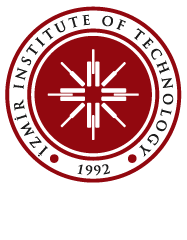EE698 Research Seminar in EE by Aslı Taşçı
You are cordially invited to the following EE698 Research Seminar by Aslı Taşçı.
Title: Electrical Stimulation Methods in Wound Healing
Date & Time: Thursday, 2 January 2020, 14.00
Place: Electrical and Electronics Engineering Conference Room
Advisor: Assoc.Prof.Dr. Barış ATAKAN
Abstract: As technology advances, it integrates into several research areas. Molecular communication (MC) is one of these areas that evolved by the advancements in nanotechnology. In MC, nature’s communication methods (pheromones, hormones etc.) are imitated. MC has various application areas. It can be employed in pollution detection sensors and environmental cleaning nanorobots. It can be employed in military applications as nanorobots and bio-warfare. Additionally, MC has a considerable amount of contribution to molecular biology and medicine. It can be employed in targeted drug delivery systems, diagnostic devices, point of care health monitoring systems and bio-synthetic implants. Wound healing is one of these interdisciplinary research areas. It is a major problem for patients and medical practitioners. The healing process consists of several stages that include cellular processes. Any disruption in these stages leads to chronic wounds. Common treatment methods are not applicable in the case of chronic wounds. Therefore, chronic wound healing requires a different perspective and an interdisciplinary approach. Compression bandaging, wound dressings, negative pressure wound therapy, skin substitutes and ultrasound are diverse methods employed in chronic wound treatment. However; these methods are expensive and time-consuming. Electrical stimulation therapy (EST) is a method that employs bioelectric currents for treatment. Furthermore, it requires less time and gives positive results fast compared to the other treatment options. In the presence of a wound, a current is created to start the healing process. Normally, this current is created and decreases over time as the wound heals. In the case of chronic wounds, this current can not be created or is not enough to start the healing process. EST employs and mimics the current of injury as a treatment strategy. The main objective of EST devices is to create or amplify the current of injury to initiate the healing process. There are two significant parameters in EST. The first one is the amount of current that is applied to the wound area. The second one is the application method of EST. Currently, there is no guideline for any of these parameters.
